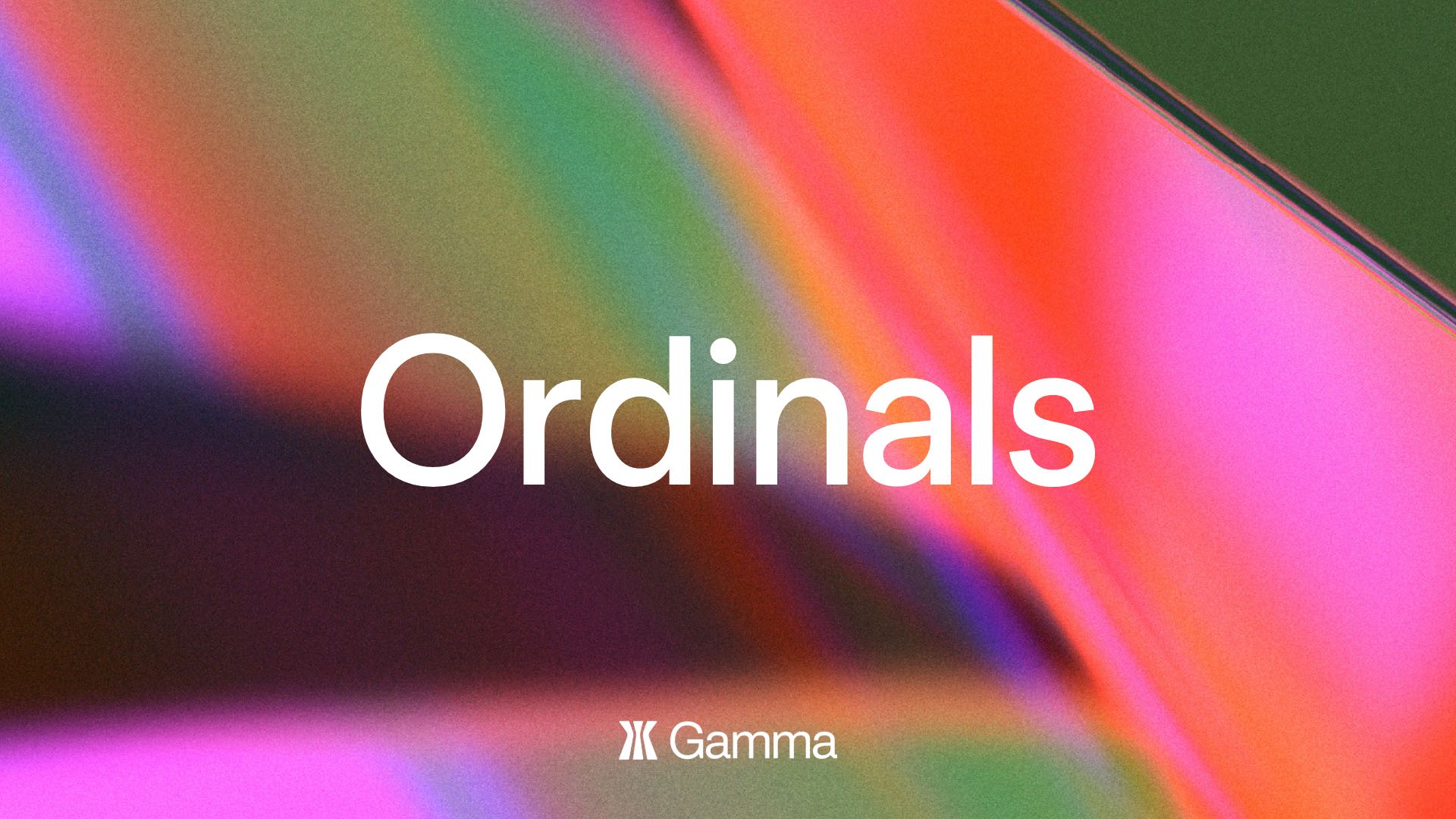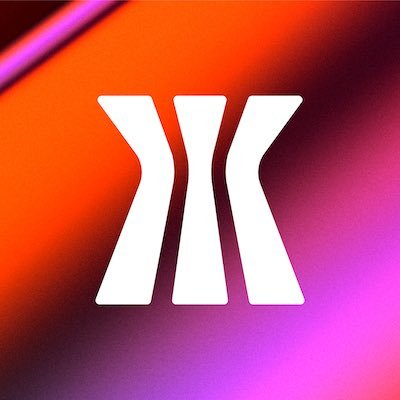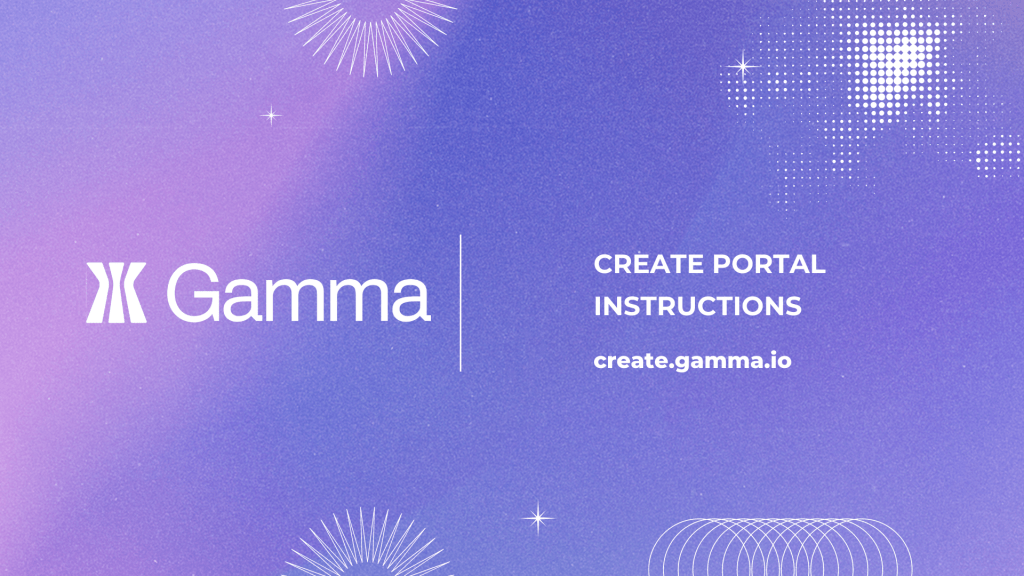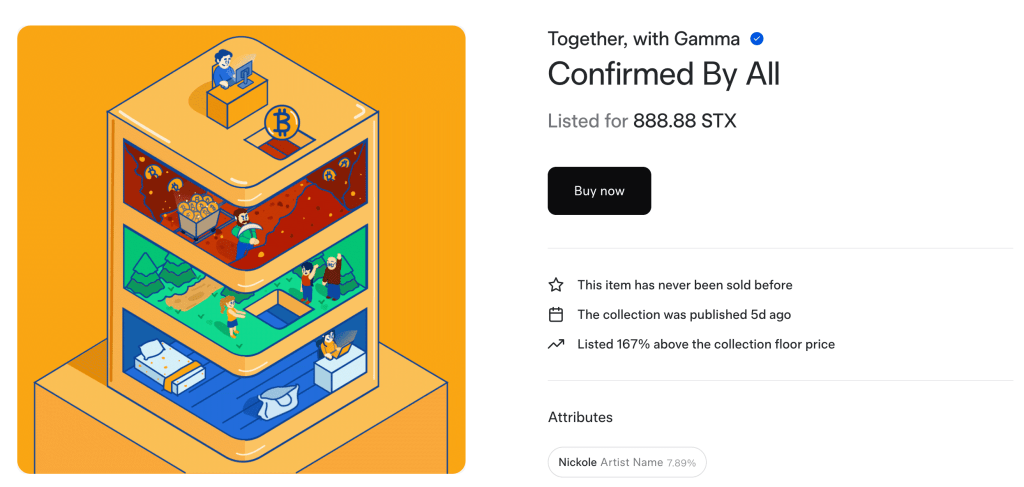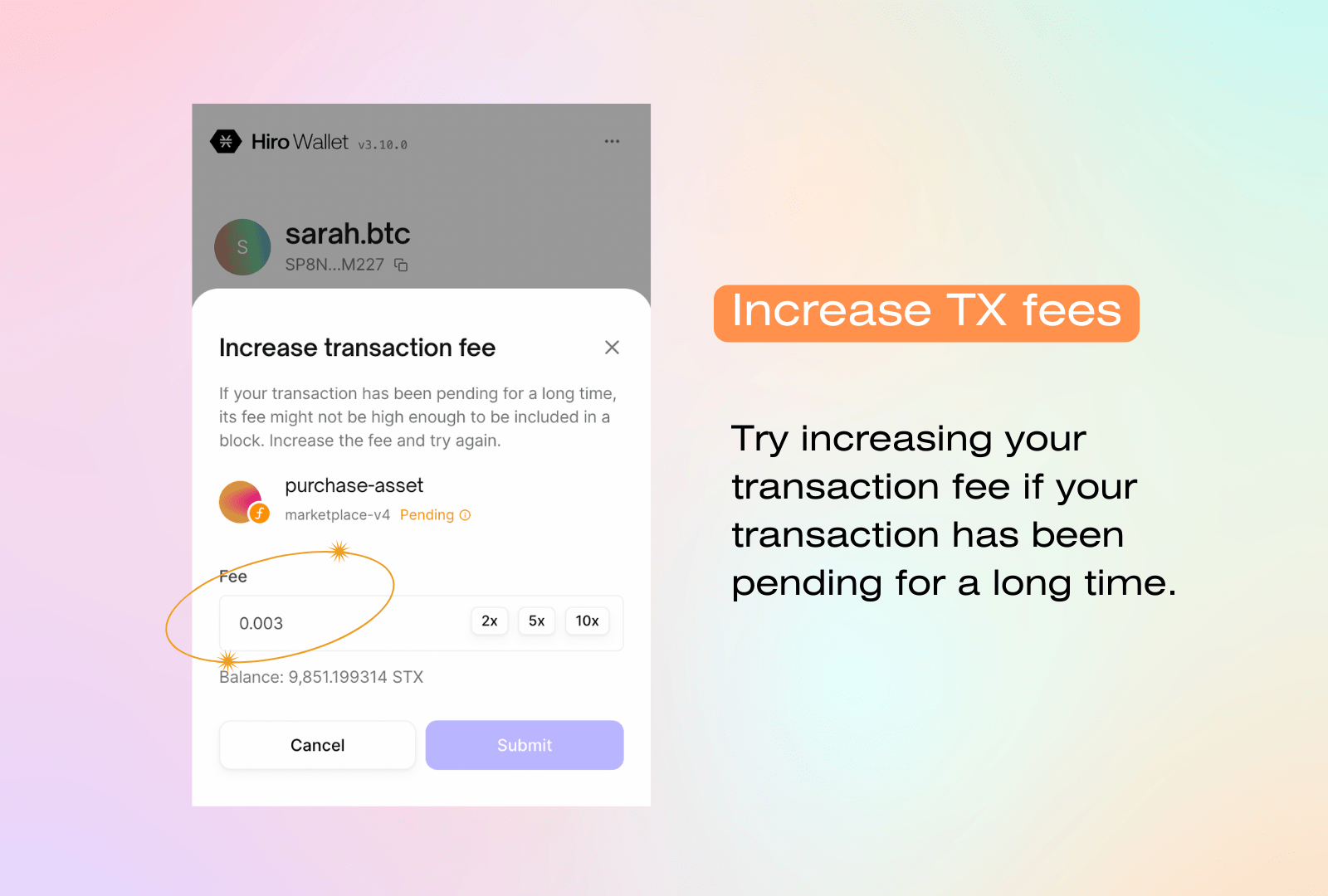Lately, all the NFT buzz has been spotlighted on one thing: Ordinals.
As another form of Bitcoin-based NFTs — which have been rising in popularity lately thanks to the Bitcoin-secured Stacks blockchain — Ordinal Theory unlocks the ability to inscribe individual satoshis (the individual unit of Bitcoin, like cents to a dollar) with unique images, notes, and anything else. Traditionally, Bitcoin and other fungible cryptocurrencies can be transacted without Ordinal differentiation, meaning that it doesn’t matter which specific satoshis are being transacted, only that the correct amount is being sent. Under Ordinal theory, the order and value of individual satoshis are considered, since there may be uniquely ascribed value (such as order rarity, or custom inscription data) to these individual units.
Thanks to Ordinals, Bitcoin NFTs are on the rise — and we’re here to onboard you in the easiest way possible.
Check out Gamma’s first Ordinal inscription!
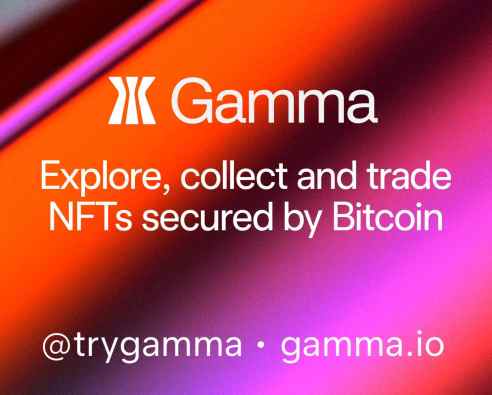
How do I get started with Ordinal inscriptions?
The hard way:
In order to work with inscriptions, you must have a fully synced Bitcoin node along with a wallet that can handle coin control so that your inscribed satoshis aren’t being spent on network fees. If you’re technically savvy, you can download Bitcoin core (for a full node) and install the ord wallet through your terminal. For a detailed guide on how to do this, check out the original Ordinals documentation.
The easier way:
For those who are looking for a simple and inexpensive way to get started with inscriptions, you can try out the new Ordinals tool we’ve just released on Gamma. Our no-code launchpad allows you to create your inscription up to 60 kb in size for a ~$5 set fee (or 21,000 sats) along with an additional 10% of the network fee that you use to confirm your inscription. You’ll have the option to upload a high resolution image and to choose or customize your transaction fee based on network congestion. Keep in mind that higher fees will help your transcription be created sooner, though this may still take hours or even days.
Thanks to Ordinal inscriptions being completely Bitcoin native with no additional blockchain or tokens involved, you won’t need to connect a wallet to access the Ordinals feature on Gamma.
To receive your newly inscribed Bitcoin NFT, you’ll need to input a new and unused taproot Bitcoin receiving address or an Ordinal-compatible one. For Stacks natives, both the Stacks-native Hiro Wallet and Xverse Wallet have now implemented Ordinal-compatible Bitcoin wallets. Since inscriptions are Bitcoin-native and do not require any additional token or blockchain, it technically does not matter which Bitcoin wallet you send your inscribed satoshis to. Keep in mind though, most wallets are not Ordinal-compatible, meaning you will not be able to view or differentiate between satoshis. This creates a risk for any outgoing transaction, since your wallet provider will not know which satoshis should be sent and which should be used for network fees. However, you can always export your wallet to a different provider that has coin control later on; keep an eye out for wallets that are working on this implementation! Because most wallets are not Ordinal-compatible, we recommend creating a fresh wallet with a taproot address for your newly inscripted satoshis that acts as a receive-only wallet for the time being.
We’ve made it easy to create Ordinal inscriptions without having to run a full Bitcoin node or write any code. Remember: Your inscriptions will live forever on the Bitcoin blockchain, so take care in your creations. You’ll be able to view your inscriptions on Gamma later by saving your inscription ID. We can’t wait to see what you create!
Update: Ordinal Collection Mints
Thanks to the quick work by our amazing team at Gamma, we’ve just released the ability to create Ordinal Collection Mints. But this isn’t just your typical buy-in-bulk option — it’s so much more than that. With the technical complexity of Ordinal inscriptions and Bitcoin, we recognize that it’s important to make your user experience as easy as possible. To do that, we’ve created a tool that allows you to:
- Create collections no code needed: There’s no need to pull up your terminal — create ordinal inscriptions and store them easily with the same tools you’re already used to on Gamma. For those who are using Stacks-native wallets like Xverse or Hiro, you can now store your newly inscribed assets along with the rest of your Stacks NFTs.
- Mint high-resolution artwork affordably: Bitcoin blockspace is pretty scarce, making inscriptions increasingly expensive. But because your inscriptions will live forever on the Bitcoin blockchain, we don’t think you should have to compromise on quality for the sake of quantity. So, our solution looks like this: a permanent backup.
On Ethereum, Stacks, Solana, etc, a common practice is using a decentralized file storage network like IPFS to store NFT metadata. While this allows for high-res assets at low costs, it also lacks the substantially higher permanence and immutability of Bitcoin. We’ve combined these two approaches to offer a fine art experience with the longevity that only Bitcoin can offer. First, we’ll store high-res assets in IPFS. Then, as users mint, we’ll compress and inscribe file size optimized versions directly on BTC, as a permanent backup. When your collection mints out and your manifest is inscribed (which ties together your collection), we’ll bundle your raw inscriptions, any metadata and attributes you add, plus a reference to your high-res IPFS assets.
When your collection mints out and your manifest is inscribed (which ties your collection together), we’ll bundle your raw inscriptions, any metadata and attributes you add, plus a reference to your high-res IPFS assets. Your inscriptions will always live 100% on-chain, directly on the Bitcoin L1, and any trading anywhere will be for native ordinal inscriptions. Our dual viewing method just ensures that a high quality viewing experience is accessible to anyone, without compromise. - Launch your collection with minimal upfront costs: Even with size-optimized assets, it can be very expensive to mint a collection up front. And, there’s no guarantee you’ll recoup those costs. When you create an Ordinals collection on Gamma, you’ll provide the source files, but your collectors will pay to inscribe.
- Have a dedicated mint/collection page: At Gamma, we’ve long offered collection mints directly on marketplace pages. We’re adding this same convenience and native experience for Ordinals too. Your collection page is your home from day 0 to day 10,000: mint, explore, and trade.
It’s time to build your digital legacy on Bitcoin. Get started in minutes on Gamma today — we can’t wait to see what you create.
